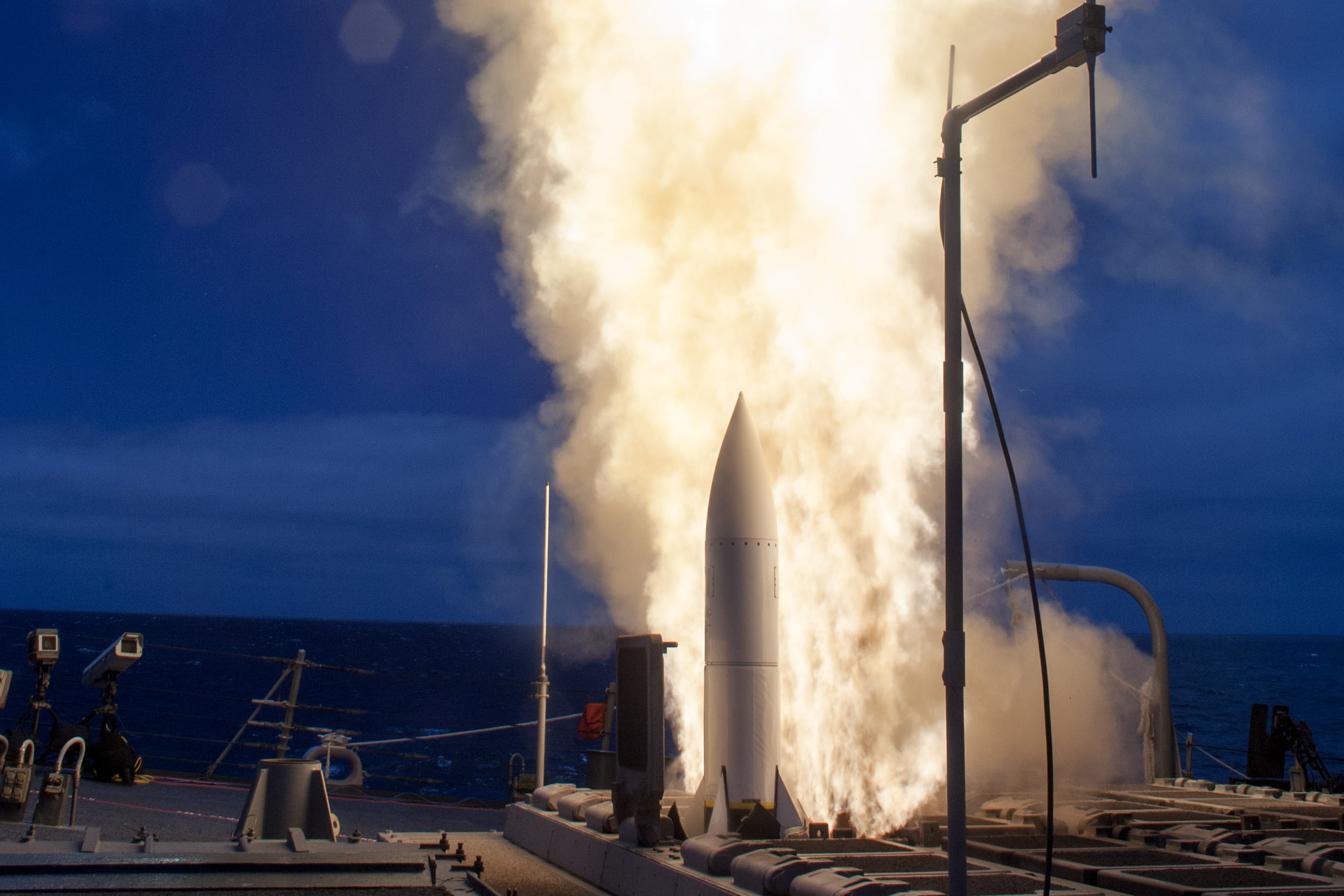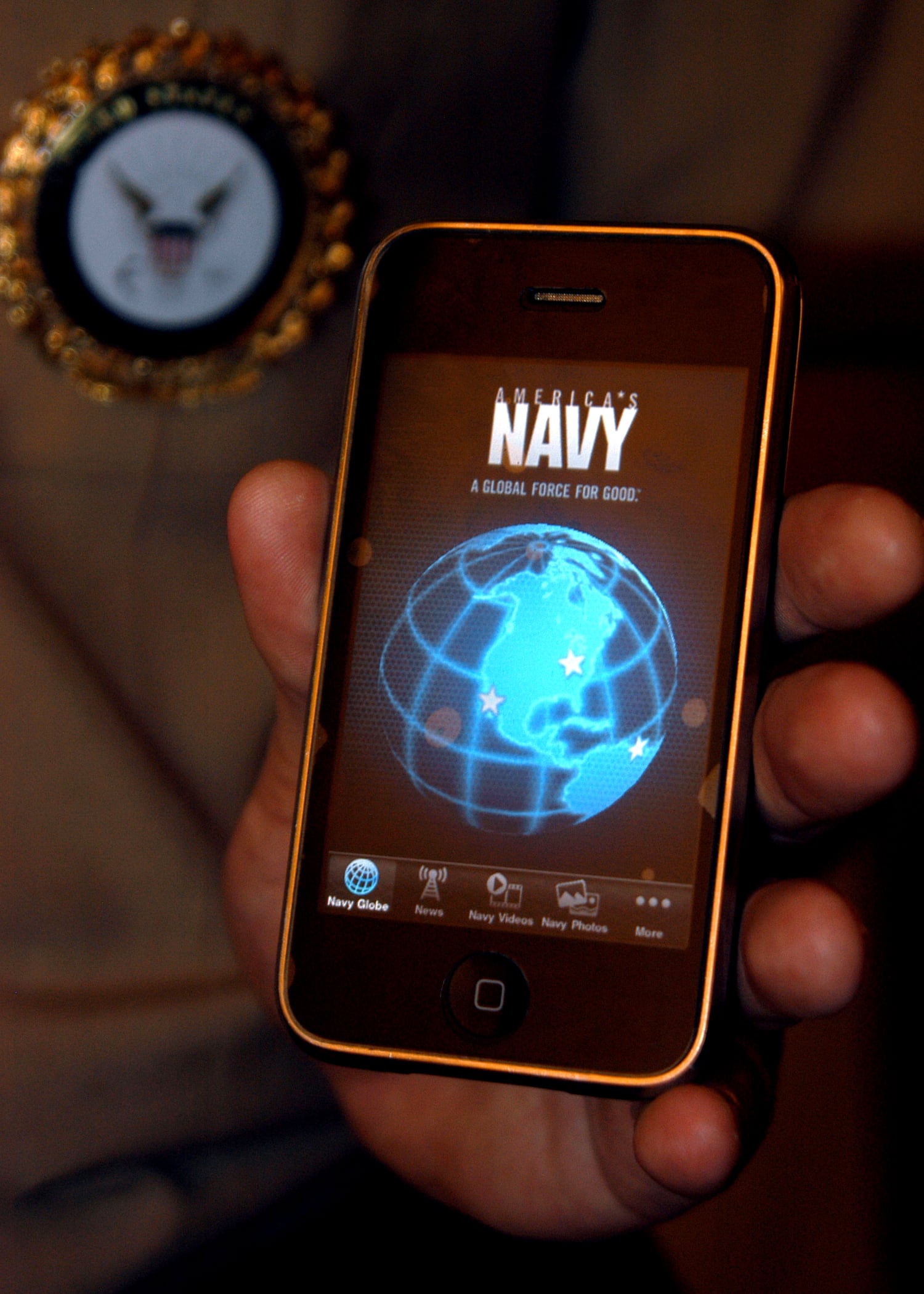WASHINGTON — As the U.S. Navy’s surface fleet moves into 2019, a radical shift is coalescing among its leaders: a move away from a model that has driven the way the service has built its ships for decades.
When the Navy built its Arleigh Burke-class destroyers, installing the Aegis combat system into the hull meant a large suite of hardware — computers, servers, consoles and displays — designed and set up specifically to run Aegis software. Any significant upgrades to the suite of systems already installed, or to the Aegis system in general, required cutting a hole in the ship and swapping out all the computers and consoles — a massively expensive undertaking.
And what’s more, Aegis isn’t the only combat system in the fleet. Raytheon’s Ship Self-Defense System runs on many of the amphibious ships and the Ford-class carriers. Both classes of littoral combat ship run different combat systems, one designed by Lockheed Martin and the other by General Dynamics. And in regard to the ships themselves, there are multiple, siloed systems that don’t feed into the main combat system.
If Navy leaders get their way, that’s going to change.
What the surface fleet wants is a single combat system that runs on every ship, and runs everything on the ship, and that doesn’t mind what hardware you are running so long as you have the computing power for it.
The goal here is that if a sailor who is trained on a big-deck amphibious ship transfers to a destroyer, no extra training will be necessary to run the equipment on the destroyer.
“That’s an imperative going forward — we have to get to one, integrated combat system,” Rear Adm. Ron Boxall, the chief of naval operations’ director of surface warfare, said in a December interview at the Pentagon with Defense News.
Boxall describes the current situation to an integrated combat system as the difference between a flip phone and an iPhone. When buying a flip phone, most of the hardware and software are already included, leaving you with a limited ability to upgrade the phone. And if you want to run more advanced applications, you need a new phone. Instead, Boxall wants the combat systems to run like the iPhone.
“For us to get faster, we either have to keep going with the model we had where we upgrade our flip phones, or we cross over the mentality to where it says: 'I don’t care what model of iPhone you have — 7 or X or whatever you have — it will still run Waze or whatever [applications] you are trying to run,” he said.

On a ship, that means that if the Navy adds a new radar, missile or laser, the software that runs the new equipment is developed as an application that interfaces with the single integrated combat system, the way Waze integrates with the iPhone or Android software.
This has the benefit of having everything linked into the central nervous system for operators in the combat information center, sonar control, on the bridge or in the ship’s intelligence-gathering center. It also means that new systems are quickly integrated, skipping the expensive process of ripping out old servers and consoles.
And it means the companies that develop the myriad combat systems in service today — say, Raytheon or Lockheed Martin — won’t have a lock on developing software for Navy ships because the Navy wants the combat system to be developed with interfaces that are accessible by outside application developers.
“We need to continue down the path to be more aggressive and get a lot more competition in the open-architecture space,” Boxall said.
“I wouldn’t call it completely open, but as open as we can be, and then share that with people who can, if they are properly classified and secured, they should be able to come into a common space and apply their expertise to develop products that we may or may not want to buy. That’s where I’d like to get to.”
The vision
The grand vision for this operating system from the deck-plates perspective would be the merging what are, today, disparate functions into one unified system, said Bryan McGrath, a retired destroyer skipper and consultant who heads The FerryBridge Group.
One of the areas in which this segmentation creates limitations falls between the combat information center — which collects and displays information gathered by ships’ sensors — and the intelligence hub known as the Ship’s Signals Exploitation Space — which uses top-secret sources to collect data on the theater in which the ship is operating.
“We need to break down the barrier between CIC and SSES, and the barrier is both a physical bulkhead and computing systems and platforms,” McGrath said. “That’s what an integrated combat system is: You have the traditional combat system function, and the intelligence, surveillance and reconnaissance functions — non-real-time and [top-secret information] functions — merged into one multilevel security-protected computing platform.”
In that scenario, if SSES receives information that three Iranian F-14 jets took off from Bushehr Air Base, a watchstander in the combat information center with the proper security clearance could see what information SSES has on the aircraft and their mission while stripping out top-secret information such as sources and methods that SSES needs to protect.
And once CIC has a radar track associated with that intelligence, all SSES data will get merged into it so decision-makers in combat have the necessary intel at their fingertips. But the logic applies to all the ship’s sensors, not just intelligence collection data. The unified combat system would associate every piece of sensor data with the track being displayed in CIC, McGrath said. Everyone connects to a single system that gives every watchstander all the information they need on every track, both real-time and non-real-time data.
“The integrated combat system includes all mission areas,” he said. “It’s electronic warfare, it’s anti-submarine warfare — we don’t segment out air and missile defense and electronic warfare, they are all just applications within the combat system. The Navy has to stop thinking of SESS, sonar, combat, electronic warfare and the bridge as different and separate elements. They have to be part of the whole.”
Staggering costs
There’s a number of obstacles to getting the surface fleet on a unified system, but one that could be insurmountable: the staggering cost of replacing the fleet’s outdated computer hardware.
The Common Source Library, developed for the Navy by Lockheed, begins moving the Navy down this path of a single, unified combat system. The CSL is essentially the iOS of an iPhone: The Navy can use CSL to program applications that run sensors and weapons systems.
So, if the Navy has a new missile system it wants to run, the software application to run it will be designed to run off of the CSL — and ships with the CSL will be able to rapidly integrate it, just like downloading the latest navigation or gaming software for a smartphone.
But the issue is that CSL requires specific hardware to function, said Tony DeSimone, chief engineer of Lockheed Martin integrated warfare systems and sensors, in a roundtable with reporters late last year.
“One of the challenges the Navy has, the constraints, is the hardware and infrastructure to support a [common integrated combat system],” DiSimone said.
“So while we are marching forward with the capability to be open and take in apps, there is an antiquated architecture out there and there is hardware that doesn’t support it. … You can’t run [integrated operating] systems today on UYK-43s. You’re just not going to be able to do it. So let’s gut them and put some blade servers in, and we’ll work with you.” The UYK-43 was once the Navy’s standard 32-bit computer for surface and submarine platforms.
The issue with replacing a fleet full of ancient computers that run old combat systems is the astronomical cost. For example, when the Navy converted the cruiser Normandy into an Aegis Baseline 9 ship, which includes updated displays and blade servers, it cost the service about $188 million and nearly a year offline.
When you stretch that over dozens of surface combatants in need of updated computers, you start eating up billions of dollars and lose decades of operational availability. So while CSL does give the Navy an interface with which developers can create applications to run various systems, it’s all for naught if the service doesn’t have the right equipment.
“Our Common Source Library has made us radar-agnostic,” said Jim Sheridan, vice president of Lockheed Martin’s naval combat and missile defense systems. “We’re also weapons-agnostic. The blocker is that we are not infrastructure-agnostic.”
Furthermore, even if the Navy did back-fit all the surface ships with updated servers, you’d need to get various companies to play nice in the sandbox by sharing proprietary information for the benefit of a unified combat system.

Ultimately, however, the Navy must affect a paradigm shift that decouples the computer suites that run its combat systems from the system itself, Boxall said.
“You can either upgrade the existing ships on that model, which is expensive and you rip the ship apart to do it — cost hundreds of millions of dollars and a year offline — or you design the ship with the idea that you are going upgrade the hardware over its time, and you separate the hardware/software layers,” Boxall said.
“We know Aegis,” he added. “What we don’t know [is how to] upgrade Aegis at the pace I think we need moving forward in the future. We don’t have a structure in place and a process by which we do that upgrades with speed.
“When we buy Aegis, it’s kind of flip-phone technology: You buy the software and the hardware together. And you can upgrade it, it’s just hard to do. If we don’t go to a more adaptable model, we are not going to be able to pace the threat.”
David B. Larter was the naval warfare reporter for Defense News.




